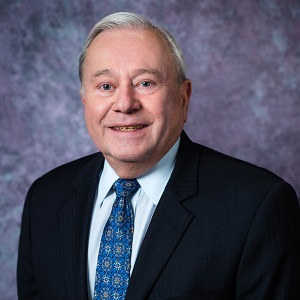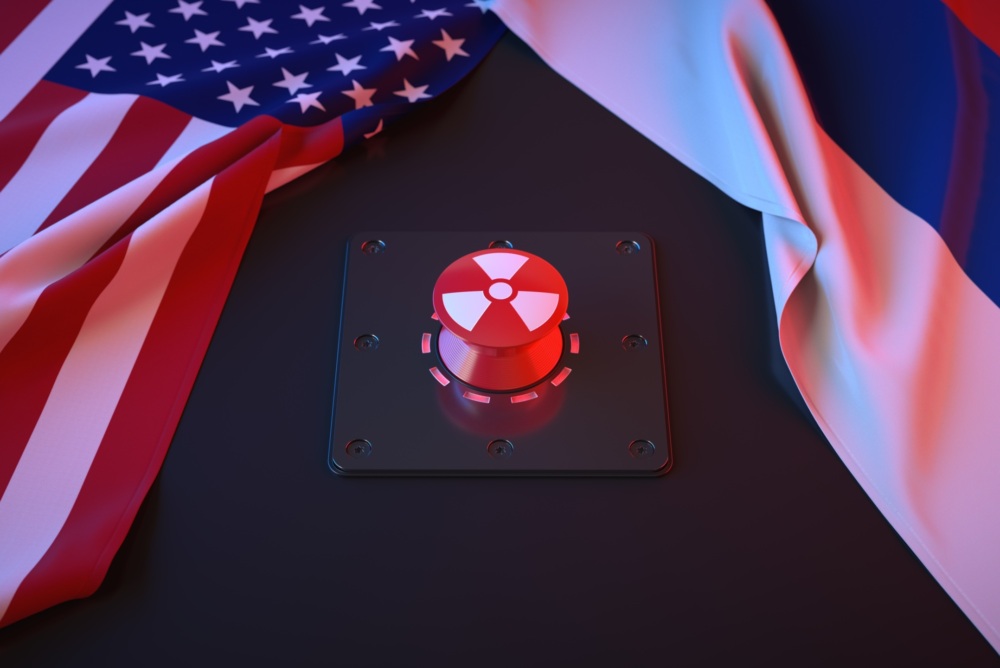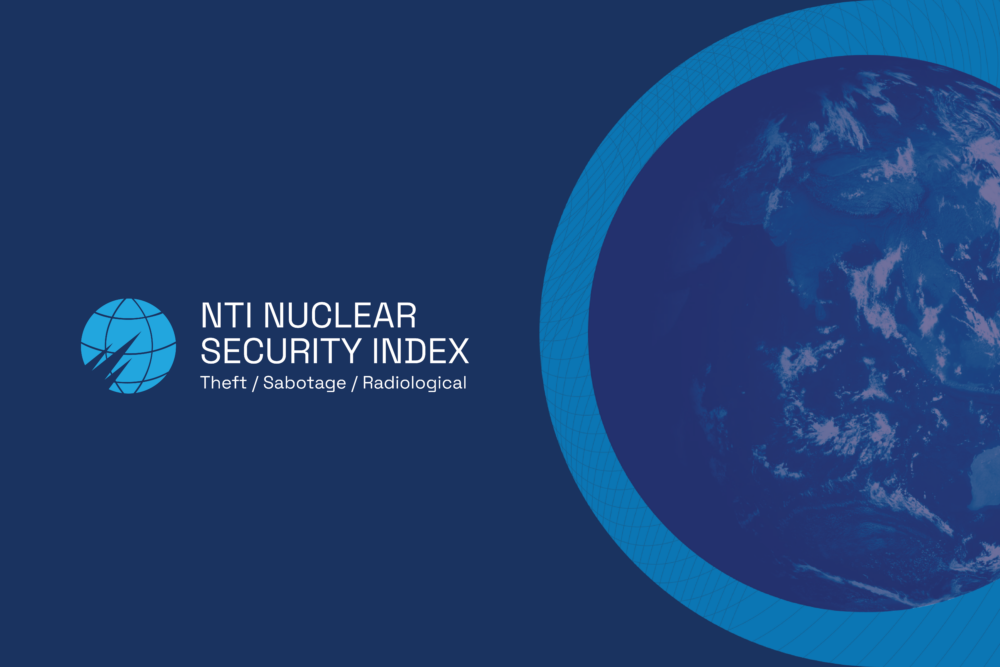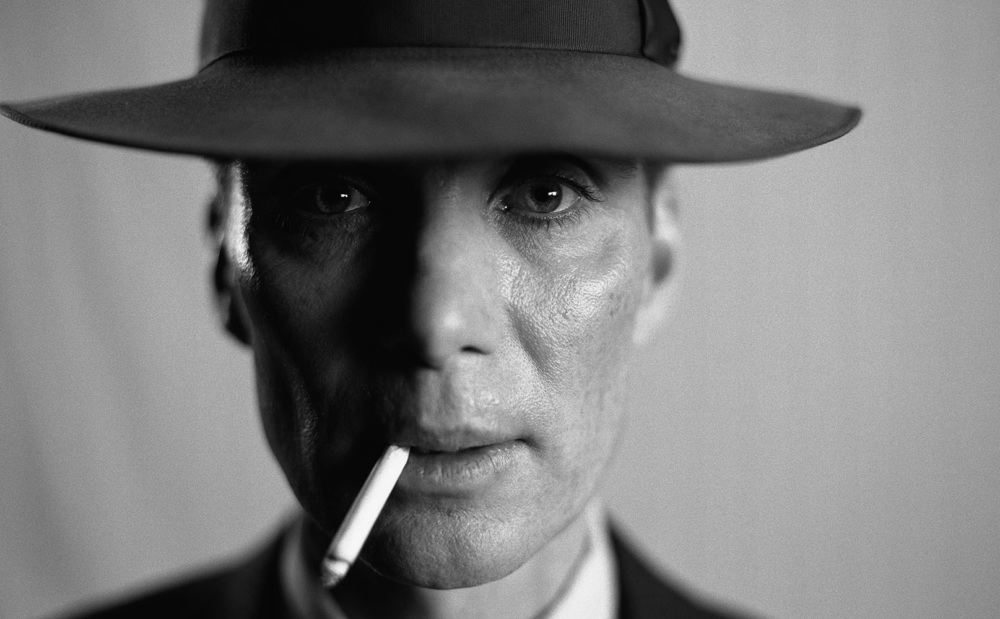
Robert E. Berls Jr., PhD
Senior Advisor for Russia and Eurasia
In Part I of this essay, I examine how Putin has succeeded for more than 20 years in balancing and controlling three essential relationships that are critical for his political survival and for that of his regime.
The most important priority for any authoritarian regime is the survival of its leader and the power structure that supports him. The degree to which this is a national interest shared by most of the population depends on the ability of the leader to meet certain basic societal needs. Society’s support can be active or passive. Although the regime encourages active support and works hard to garner it, a passive population that eschews direct opposition to the regime is acceptable.
At the extreme end of authoritarian regimes are those described as totalitarian. They rely on terror as their principal instrument of coercion of the population. During the first half of the 20th century, Joseph Stalin and his secret police imposed a regime of terror that resulted in the submission by all but a few brave souls to the will of the dictator. The idea that any form of dissent could play a role, much less flourish under Stalin’s rule, was inconceivable. After Stalin’s death in 1953 and the eventual weakening of the Soviet regime, the relationship between the Soviet ruler and the ruled began to change.
With the collapse of the Soviet Union, preceded by Mikhail Gorbachev’s attempt to save a dying regime and Boris Yeltsin’s efforts to create a new political structure on the ruins of the former Soviet state, new challenges arose as Russia faced the daunting task of cobbling together a new governing structure following a long tradition of authoritarian rule. It was a challenge the country was not able to overcome. With Vladimir Putin at the helm beginning in 2000, Russia, which many had hoped would proceed along a democratic path, would once again find itself struggling with a new identity and a new system of government. It soon became apparent that it was easier to rule Russia with an iron fist than to extend a hand to a population in search of a better future.
Since Putin assumed power more than 20 years ago, he has had to establish a workable balance between the power elite and the general population to maintain his rule and govern effectively. This has not been an easy task.
We have seen in recent years how certain authoritarian leaders have failed to establish a successful balance. Nicolás Maduro in Venezuela and Bashar al-Assad in Syria are examples of such failures. They have had to resort to intimidation, force, and terror in order to remain in power. Although Putin has not shied away from using more extreme means to maintain control, he has usually done so in a more measured, albeit at times clumsy and abusive, way as demonstrated by the violent attacks and arrests of demonstrators protesting the reform of the pension system in 2019. Putin has also pursued a relentless effort to suppress the activities of opposition leader Alexey Navalny, to limit his impact, and intimidate anyone who may oppose him.
For authoritarian leaders to maintain power, there are three important relationships that must be properly balanced and controlled. The first is the relationship between the leader and his power elite. The second is the relationship between the leader and the general population. And the third is the relationship between the general population and the authorities (local and national level bureaucrats and officials).
In Russia, the most important and complex of the three relationships is the one between Putin and the power elite. Although this relationship can be described as symbiotic because each side needs the other for survival, Putin is the dominant force and has been successful over the years in maintaining the upper hand.
When Putin acceded to the presidency after a brief stint as prime minister, he inherited the power structure that had bolstered the Yeltsin regime for almost a decade. The “Yeltsin family” and the oligarchs who surrounded Yeltsin were either relegated to subservient positions in the new Putin regime or were replaced by Putin’s cronies from his earlier years in St. Petersburg or from his time in the KGB.
New oligarchs arose under Putin (a few also survived from the Yeltsin years) and became an important tool for Putin as he manipulated the diverse forces of the power elite. These oligarchs amassed great wealth, but they remained under Putin’s control and were obliged to do his bidding whenever so ordered. Corruption, which created a state described as a kleptocracy, became the most prominent feature of the Putin regime.
Putin has relied heavily on the government’s security forces and those who were close to him in the past to implement his policy decisions. Putin is intelligent in a cunning, Byzantine way and is very adept at manipulating others. Loyalty is the most important element in the relationship between Putin and his close subordinates, but fear and uncertainty are also powerful tools that Putin uses to manipulate the rival political groups or clans that make up what is called the “power vertical.”
As the clans struggle among themselves for influence within the power vertical, Putin stays above the fray. He represents only himself; he is not the head of a political party or a movement. He is the ultimate arbiter and decider—the only politician who matters. Putin has not indicated, at least to the extent that outsiders can discern, whether he is grooming a potential successor. To do so would weaken him and make him more vulnerable to pressures from the rival political clans.
Putin has been gradually removing many of the original members of his power elite, including some of those who were particularly close to him, and replacing them with younger technocrats. These new leaders owe their positions and allegiance totally to Putin; they do not have a personal power base, as many of Putin’s earlier close associates did. By renewing the power elite and keeping older members in a state of uncertainty, Putin manipulates the clans and maintains the upper hand in the power structure.
Although the power vertical serves the interests of Putin and his authoritarian regime, its future is in doubt, and it may not be able to sustain itself after Putin. Centralized power under one man without an effective horizontal infrastructure and power interactions that permeate the expanse of Russia at all levels of management make it exceedingly difficult for the country to effectively manage itself, modernize, or even deal with a serious crisis. The structure that Putin has built could collapse once he is gone.
The future of Russia’s political structure is uncertain. Putin’s future is uncertain. Will Putin postpone the need for Russia to develop a new governing structure by finding a way to hold on to power when his current term as president expires in 2024? Will the power elite accept any attempt to change the governing structure—a change that could jeopardize their power, their wealth, and even their lives? Or will Russia continue to muddle through as it so often does by eschewing significant change and accepting the least challenging path forward? The year 2024 could be a year of great significance for Putin, his power elite, and the Russian people.
The relationship between Putin and the general population is the next key element in ensuring the survival of Putin and his regime. It is a relationship based on an unwritten social contract that offers both sides sufficient reasons to maintain the status quo.
Over the course of the past 20 years, this social contact has evolved into one in which Putin and his regime provide the population with a certain degree of economic stability and upward mobility; freedom of movement and travel abroad (previously greatly restricted by the Soviet regime); modest social and economic benefits, including health care and state pensions; and opportunities to express national pride in exchange for the population not getting involved in the political activities of the regime and accepting the corruption and various machinations of the power elite.
The degree to which this contract has been observed has ebbed and flowed as the economic and political conditions in the country have changed. Early on, Putin argued that the chaos and economic hardships that Russia endured in the 1990s was the fault of the West and Russia’s so-called Western reformers and only he could fix the problem. Putin was aided in this effort by the oil boom of the early 2000s that saw millions of Russians move into a growing middle class. When the global economic crisis hit Russia in 2008, the unwritten contract suffered a shock. The steady increase in living standards slowed down, but the level of corruption in the country and the impact it had on the daily lives of ordinary citizens continued unabated. Darker elements began to emerge following the almost fairy-tale years of the early 2000s, but then a new situation arose that recast the contract in a new light. Russia’s five-day war with Georgia in 2008 launched a tidal wave of patriotism among the Russian people that pushed many of the unsatisfactory aspects of the contract into the background.
Just prior to the events in Georgia, Putin ended his second term as president and was replaced temporarily by his prime minister, Dmitry Medvedev. Putin remained in the background as the new prime minister—a change the Russians called “castling” after the move in chess where the rook changes position with the king. But there was no doubt in everyone’s mind that Putin remained the supreme power in the country.
When Medvedev announced in September 2011 that he would not seek a second term as president in 2012 and that Vladimir Putin would be running again for president (the Russian Constitution did not at that time prohibit a former president from seeking another term after being out of office for a period of time), shock waves reverberated through segments of Russian society that were hoping for change. Following what many believed were rigged elections for the State Duma (the lower house of parliament) in December 2011, a series of demonstrations broke out in Moscow and other cities over the next several months that were unprecedented in Russia since the collapse of the Soviet Union. The largest and most violent protests occurred in Moscow on May 6, 2012—the day before Putin was inaugurated for his third term as president. The following day, Putin’s motorcade sped through totally empty streets on the way to the Kremlin for the swearing-in ceremony. The contrast could not have been starker. The country was in shock. The unwritten social contact appeared to be in tatters.
Putin was equally shocked by the protests. He took immediate action to crack down on the protesters and suppress the still-weak opposition movement. The social contract had to be reinforced with new elements that would satisfy the population as Putin and his power vertical reasserted control over the country.
The focus of the contract shifted to an emphasis on national pride, historical tradition, and patriotism. Tsarist and Soviet symbols were reintroduced into the Russian fabric. The Russian Orthodox Church returned to its preeminent position in Russian society—a position that it had not enjoyed since tsarist days. Victory in the Great Patriotic War (World War II)—a monumental event in the lives of the Soviet people—was celebrated with even greater fanfare than previously. Legislation to promote conservative values and protect Russian society from the contagion of corrupt Western social norms was adopted and rigorously enforced. Except for a small segment of Russian society that identifies with the West, most Russians welcomed these steps and felt reassured that Russia was returning to its traditional roots and that Putin was defending Russian society and making Russia stronger. The unwritten social contract was reinforced, and the relationship between the leader and the led appeared again to be stable.
The Russian annexation of Crimea in 2014 and Russia’s war in eastern Ukraine were overwhelmingly supported by the Russian people. Putin’s approval rating, which had been in the 60s prior to the events in Ukraine, jumped to the high 80s. The sense of pride among the Russian people that Russia was again a power that had to be reckoned with soared to new heights.
But nationalism and pride in foreign adventures can sustain a high level of support for just so long until the reality of conditions at home sets in. The contract with society requires constant nurturing if it is to be sustained at an acceptable level. Economic conditions in Russia today are not getting better. Western sanctions are affecting Russian society. The ruble is getting weaker, and inflation is beginning to rise again. Infrastructure remains in an abominable state of disrepair in many parts of Russia. Although Russia spent billions of rubles to build a bridge connection Crimea with the Russian mainland, bridges elsewhere in Russia are crumbling and many roads remain nothing more than bogs of mud. Health care is in desperate need of investment, as are housing and education. Will Putin and his regime be able to respond adequately to the economic and social needs of the people, or will he resort to more forceful methods to maintain order?
In 2019, widespread protests broke out across the country against a government plan to raise the retirement age for men from 60 to 65 and for women from 55 to 63. This proposal posed a direct challenge to Putin and the social contract. A poll showed that 90 percent of the Russian population opposed pension reform.
Initially, Putin remained above the fray and let the government authorities deal with the discontent. As protests across the country became more vocal, Putin stepped in as the benevolent “tsar” to reassure the people that he was on their side. He delivered a speech to the nation in which he softened the plan by proposing that the retirement age for women should be 60, not 63. This did not calm the concerns of many people. On September 9, 2018, in response to calls by political activist Alexey Navalny (who had already been arrested for 30 days to prevent him from leading demonstrations), crowds came out onto the streets of many Russian cities to protest. The demonstrations were forcefully suppressed, and more than 1,000 demonstrators were arrested, including children as young as nine years old.
Following the protests against pension reform, Putin’s approval rating fell back to the 60s (a significant drop from the halcyon days following the Crimean annexation). The uproar over pension reform subsided, but its long-term impact will remain as a further sign of the fragile relationship between Putin and Russian society and their increasingly tenuous relationship. But this is just one of the more pressing socio-economic issues that Putin needs to address to maintain an acceptable balance of the social contract. Will Putin and his government make the investment necessary to bring about meaningful changes in the lives of the people? Will he engage in another foreign adventure to rally the population? Or will he resort to more authoritarian methods of intimidation and pressure?
The economic demands are indeed formidable. Major investment and modernization are requirements that Russian leaders have repeatedly promised to address but have largely failed to realize. Conditions do not augur well for new attempts given current internal and external economic and political pressures.
Is another foreign adventure likely in the cards? Russia’s foray into Syria has come at a significant cost—both economically and in terms of support from the Russian people who are increasingly questioning the wisdom of Russia’s involvement in the region.
Would a military adventure closer to home garner greater support for Putin and his regime? What about more active military engagement in eastern Ukraine? There are signs that both military and political activities are pointing in that direction. But perhaps they are just another attempt to pressure Kyiv to submit to Russia’s demands.
There is also the possibility that Putin might consider initiating a provocation against one or more of Russia’s neighbors that have a significant ethnic Russian population. Such a move would be extremely risky and could escalate into a larger confrontation. But Putin was able to successfully destabilize Ukraine. Could he get away with similar aggression elsewhere?
A crackdown on the opposition continues. Alexey Navalny—Putin’s “bête-noir” whose name Putin refuses to utter—is the most vocal opponent of the Putin regime. Although Navalny’s support among the general population is very limited, Putin and his regime rigorously stifle every effort Navalny takes to rally people against Putin and the corruption that so deeply penetrates his regime.
The state is also taking far-reaching steps to control and suppress voices of discontent and opposition on the internet. Charges of extremism and arrests of ordinary citizens who post memes online that the regime considers offensive are on the rise and are raising concern that further suppression of civil society can be expected.
Despite the challenges Putin and his regime face in maintaining an acceptable balance to the unwritten contract with society and the fluctuation in Putin’s ratings, the position of Putin and his power vertical is currently secure. Support for Putin remains solid among much of the general population. This support emanates not only from what Putin has done and is doing for Russia but also reflects a fear among many that life could be worse under a different leader.
The big question is how will the younger generation that has grown up knowing no other political leader than Putin respond to the challenges Russia faces. In general, many young people still support Putin, although far fewer that their parents and grandparents do. They are pleased that he has restored Russia’s place in the world as a power to be reckoned with, but they are becoming impatient with the stagnation that is growing in the economic and political spheres of the country. Many young people want change, and a vocal minority is participating more actively in protest demonstrations. If more young people begin to express their dissatisfaction with issues affecting their future, this will become a major problem for Putin. The social contract that the younger generation’s parents have had with the state may not be acceptable to them. Change is inevitable. The challenge will be how to manage that change.
As the Russian people look to the future and to what may happen in 2024 when Putin’s current term as president ends, there is much uncertainty. Russians have little experience with a smooth transition of power from one regime to another. What they value most is stability. For this reason, more than half the respondents in a recent poll indicated that they want Putin to remain in power beyond 2024. Until a determination is made about the future of Russia’s leader and the system of government post-2024, Putin and Russian society will continue to struggle to preserve their relationship and the unwritten contract that binds them together.
The third and final component of the troika that holds the Russia polity together is the relationship between the general population and the authorities—officials and bureaucrats—at the national and local levels. This is the most contentious relationship because it is the one in which there is frequent tension and potential hostility.
Traditionally, the relationship between the Russian people and the authorities has ranged from indifference to outright disdain, and the feeling has been mutual. The gulf between them is wide. Russians remains largely apolitical. Few are willing to risk getting involved in political activities that could change the system. Most Russians eschew interactions with the authorities they view as corrupt, incompetent, and not interested in making their lives easier. The Russian people view themselves as separate from the state and are resigned to the fact that because they are unable to influence government policy, there is no reason even to try. A recent poll shows that 94 percent of the respondents believe that the only way their life can get better is if they rely on themselves rather than on the state for assistance.
There is, however, an age-old tradition in Russia that goes back to tsarist days: the appeal to the tsar (today: Putin) over the head of the boyars (today: the state bureaucrats) to solve peoples’ problems. Although the above-cited poll indicates that the overwhelming majority of the population has become more self-reliant, this appeal to the leader over the heads of the authorities still exists, but mainly in rural parts of Russia. This belief that “if only Putin knew” or “only Putin can fix the problem” comes alive every year during Putin’s highly orchestrated nationwide call-in show. Interspersed with questions about politics and policies posed by politicians and celebrities are pleas from ordinary citizens for Putin “to fix my roof,” “provide a sick girl with a doll,” and other mundane requests for assistance. Although this may seem trivial, it serves a useful purpose. It delivers the important message that among the fears and uncertainties of everyday life, even ordinary Russians can be assured that Putin will protect them, will assuage their concerns, and will solve their problems.
For the remaining years of Putin’s current term, barring any unforeseen circumstances, Putin and his power vertical will be at the helm as Russia navigates increasingly turbulent waters. As 2024 approaches and decisions are made about Russia’s future, the relationships among the three components of Russian polity will be crucial in determining the outcome of this process.
Washington, DC
September 2018
Sign up for our newsletter to get the latest on nuclear and biological threats.
There is a critical need for a global diplomatic approach to address growing cyber risks, including, where possible, through cooperation between the United States and Russia.
“The bottom line is that the countries and areas with the greatest responsibility for protecting the world from a catastrophic act of nuclear terrorism are derelict in their duty,” the 2023 NTI Index reports.
Christopher Nolan's Oppenheimer is the most high-profile film about nuclear weapons ever made.


